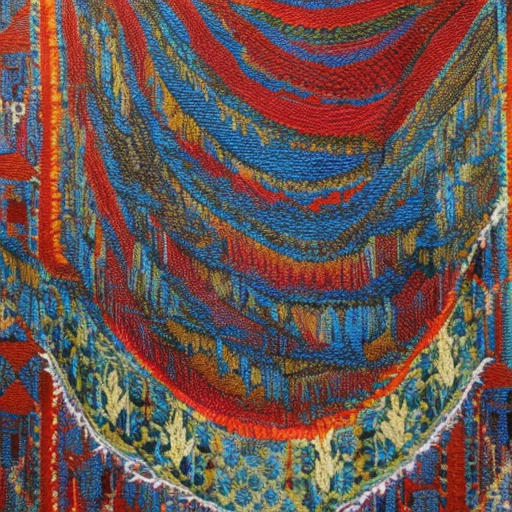Tapestry: A Detailed Summary
Tapestry is a form of textile art that has been practiced for centuries. It involves weaving together threads of different colors to create intricate designs and images. The resulting fabric is often used as a decorative wall hanging or a functional piece of furniture covering. Tapestry has a rich history and has been used by various cultures around the world to tell stories, showcase artistic skill, and adorn important spaces.
History of Tapestry
The origins of tapestry can be traced back to ancient civilizations such as Egypt, Greece, and China. However, it was during the Middle Ages in Europe that tapestry reached its peak of popularity. The art form flourished in medieval France and the Low Countries, where skilled weavers created elaborate tapestries for nobility and the church. These tapestries were often large in size and depicted scenes from mythology, history, or religious narratives.
Techniques and Materials
Tapestry is created using a variety of techniques, but the most common method is known as the “weft-faced” technique. In this technique, the weaver works on a vertical loom, attaching the colored weft threads horizontally to create the design. The warp threads, which run vertically, provide the structure and support for the tapestry.
Traditionally, tapestries were made using wool for both the warp and weft threads. Wool was preferred for its durability and ability to hold vibrant colors. However, other materials such as silk, linen, and cotton have also been used in tapestry production. Today, contemporary tapestry artists often experiment with a wide range of materials, including synthetic fibers and even recycled materials.
Themes and Designs
Tapestry designs can vary greatly, depending on the artist’s vision and the intended purpose of the piece. Some tapestries feature intricate patterns and abstract designs, while others depict realistic scenes and figures. Historical events, landscapes, portraits, and religious motifs are common themes found in tapestry art.
One of the most famous tapestry series is the “The Lady and the Unicorn” series, created in the late 15th century. This series consists of six tapestries that depict a lady and a unicorn in various settings. The tapestries are renowned for their exquisite detail, vibrant colors, and mysterious symbolism.
Significance and Preservation
Tapestry has long been considered a prestigious art form, often associated with wealth and power. In addition to their decorative function, tapestries were used to insulate and decorate the walls of castles, palaces, and churches. They also served as a form of storytelling, conveying important narratives to illiterate audiences.
Preserving tapestries is a complex task due to their size, delicate nature, and vulnerability to damage. Proper storage, handling, and conservation techniques are essential to ensure their longevity. Museums and art institutions play a crucial role in safeguarding and displaying these valuable artworks.
Contemporary Tapestry
While tapestry has a rich historical tradition, it continues to evolve as a contemporary art form. Many artists today are pushing the boundaries of traditional tapestry techniques, experimenting with new materials, and exploring innovative concepts. Contemporary tapestries can be found in galleries and exhibitions worldwide, showcasing the ongoing relevance and versatility of this ancient art form.
In conclusion, tapestry is a captivating art form that has captivated audiences for centuries. Its intricate designs, vibrant colors, and rich history make it a unique and valuable part of our cultural heritage. Whether ancient or contemporary, tapestries continue to inspire and delight viewers with their beauty and storytelling abilities.












